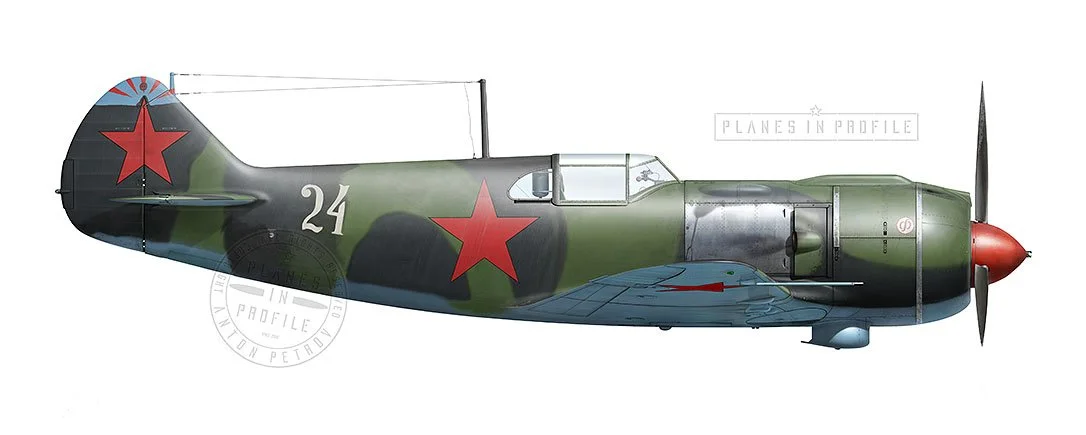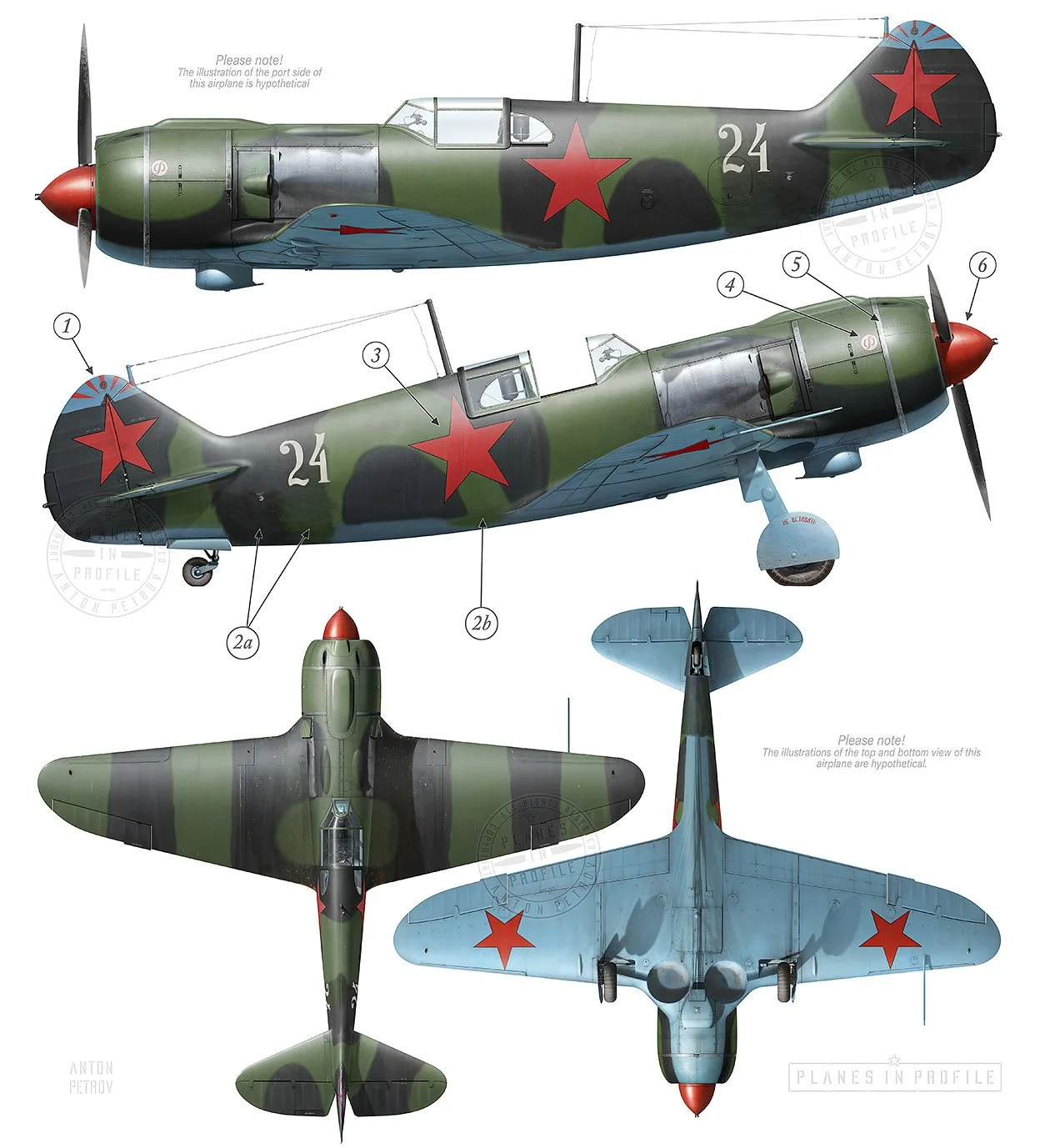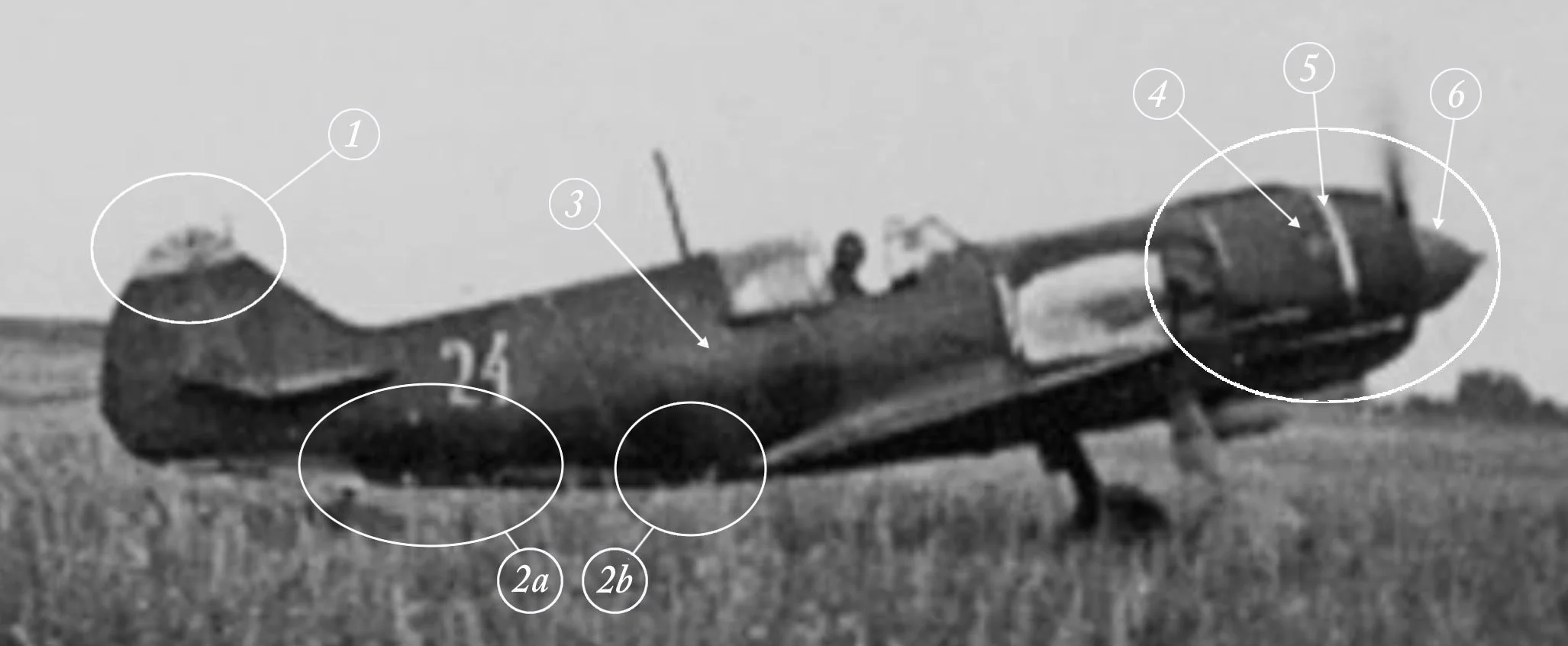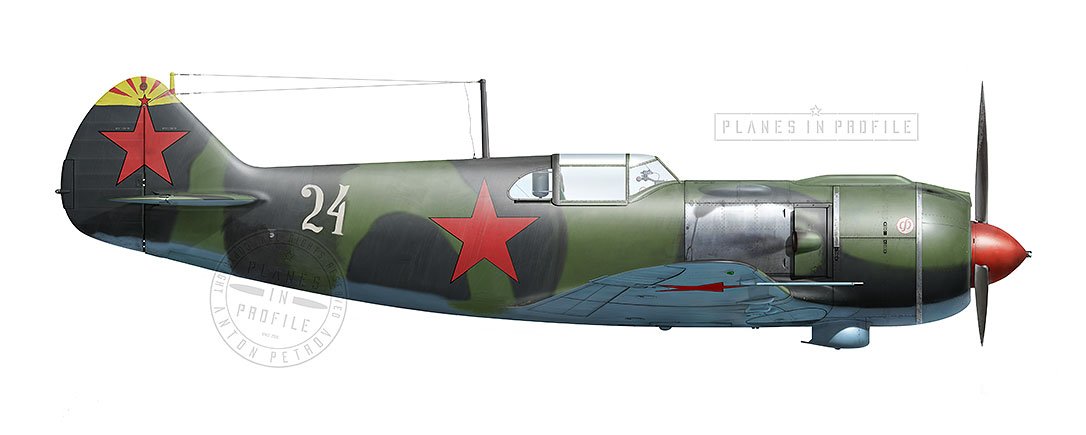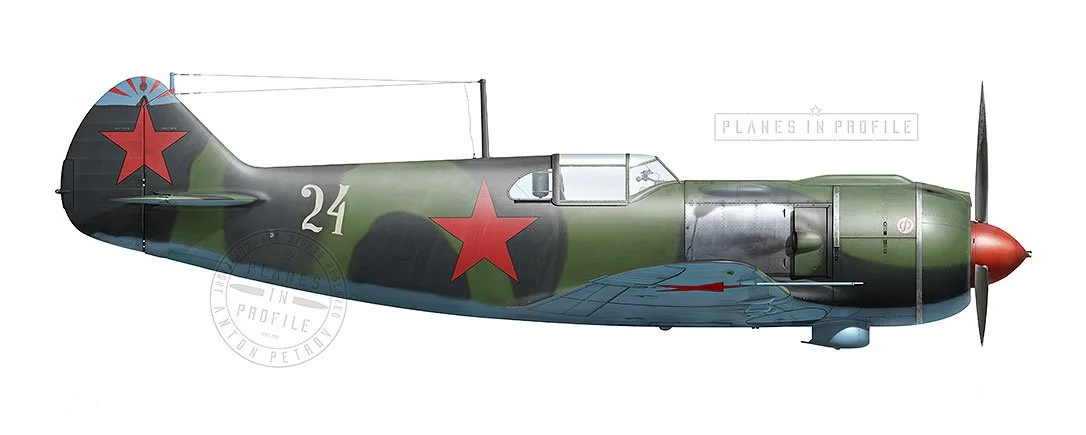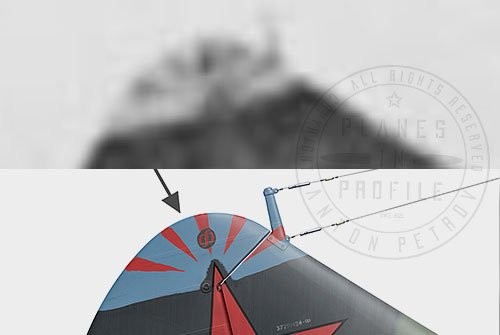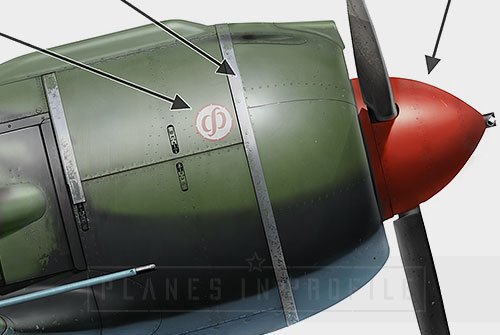White-24
Lavochkin, La-5F (Type 37)
Unknown unit and location, circa summer 1943.
“White-24” is an airplane which I’ve seen illustrated in at least one publication about the La-5[1]. No doubt that this plane was chosen for its intriguing pilotka. “Pilotka” was a nickname used by the Soviets to refer to the painted top part of the Rudder/Fin - a tactical identification marking which often represented the airplane’s squadron. The actual word “Pilotka” is simply Russian for “Flight cap” or “Side cap”.
This marking on the fin of White-24 has been interpreted in various ways, some sources showing red rays radiating from the base of the yellow pilotka with a small star in the center of it, and others show the whole pilotka as painted one solid colour, without any rays/star. Unfortunately the reference for this airplane is quite poor, since White-24 only appears in the background of a photo featuring two La-5s of an unknown unit in an unknown location, so we can’t easily confirm the correct interpretation of White-24’s visual details, but we can try.
Noteworthy visual characteristics
General) The airplane is a La-5F, Type-37 machine (Basically an early version of the La-5F) as is determined by the ‘high back’ fuselage, canopy, and the marks on the engine cowling and the tip of the fin where we would expect to find the La-5F’s ‘F’ symbols. The plane is painted with the Green/Black camo with the usual ‘early design’ stars most likely appearing in the standard 6 positions - two on the fuselage, two on the tail, two on the underwings. The plane was probably similarly weathered to the airplane in the foreground of the photo which features White-24.
1) The colour of White-24’s pilotka appears to be darker than the white of number ‘24’, and is similar in tone to the AMT-7 light blue of the airplane’s lower surfaces. So the colour of White-24’s pilotka might have been light blue in my opinion, possibly with red rays radiating from the centre of the base.
In all other illustrations of this plane that I have seen, the pilotka is interpreted as being ‘yellow’. But yellow was a difficult paint to get in USSR during the war according to many veterans, so given a choice between ‘blue’ and ‘yellow’ it would be safer to speculate that White-24’s unit had their pilotkas painted blue rather than yellow.
A little dark circle at the top of the pilotka is most likely the Cyrillic letter ‘ Ф’ (F) representing the La-5F modification of the La-5, possibly painted with red paint. Whoever painted the pilotka evidently painted it around the ‘F’ symbol, leaving the symbol still visible.
It’s possible that the rays are actually radiating from a small red star painted over the tip of the top point of the large star. As shown in the last image below. Although this idea is extremely speculative, it does make sense based on the meaning it would convey and based on the size and tone of the spot in the photo.
The rays were most likely unique to White-24 because usually pilotkas were painted with one solid colour without any artwork on them, like the pilotka of White-65 in the foreground of the photo reference. Perhaps White-24 belonged to someone special, a commander of a squadron perhaps, or simply someone with a creative flare.
The illustration above White-24’s with one of a few possible interpretations of what the pilotka might have looked like. This version is great looking option, but I believe that the blue version without the little star is a more realistic interpretation.
2) There appears to be some repainting work in the area indicated by the ‘2a’ and ‘2b’ arrows. The darker paint seems to reach all the way to the bottom of the fuselage. This might have been a repair job of some sort. It’s also possible that the paint in the area marked ‘2a’ was applied in order to cover a previously existing marking, such as maybe a white band painted around the fuselage, similar to White-06, or Vendl’s White-24.
But of course, there is always a chance that what appears to be ‘repainted areas’ is just an illusion in the low resolution photograph and that the plane actually had normal camouflage pattern, as per the image below.
3) The star is positioned further forward than on the earlier La-5s. This new position of the star became standard to Lavochkins after mid-1943.
4) A Cyrillic letter ‘ Ф’ (F) in a circle, was a symbol representing the La-5F modification of the La-5. It usually appeared on the engine cowling and the top of the fin/rudder.
5) The cowl bands appear to be shiny in some areas and not in others - evidence that they were previously painted but that most of the paint chipped of off them exposing bare metal.
6) The propeller spinner appears to be similar in tone to the star, it was most likely painted red. Probably an identification marking of White-24’s regiment.
Here are a few closeup images to help illustrate the points above. Full set of closeup images is On Patreon
FOOTNOTES
[1] An illustration of this airplane appears in a publication called “Истребитель Ла-5”, “Авиаколлекция“ by N.Kruglov, V.Kotelnikov, M.Orlov. Part 1, Published by “Моделист Конструктор “, in 2018.
LINKS TO THE REFERENCE IMAGES AND VIDEOS
https://www.realhistoryonline.com/wp-content/uploads/2021/09/Ла-5b.jpg
All the work presented on this is page is subject to updates and revisions in the light of new information which might present itself. If you have any new information relevant to this page or disagree with anything that's presented here, then please feel free to contact me through the Planes in Profile Facebook page. Thanks:)

